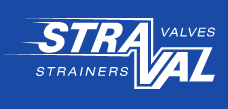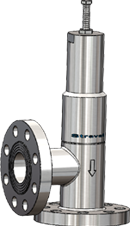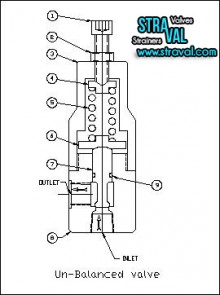Straval manufactures several pressure regulators that are both balanced and unbalanced. This article discusses the merits and features of each type and where each should be used in your specific application.
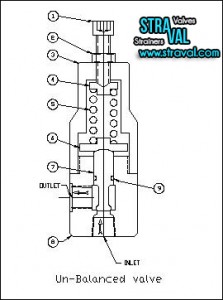 Basically the balanced models allow for a large variation in inlet pressure with little or no effect on the outlet pressure. So where large fluctuations in inlet pressure exist a balanced version would have to be selected. If an unbalanced valve is operating in an existing piping installation and the inlet pressure were to change over a period of time, a manual adjustment could be made to reset the original set pressure to compensate for a significant change in inlet pressure. An occasional drift in set pressure may be acceptable in some instances, but where a fairly constant outlet pressure is required and where frequent adjustments are not practical, selecting a balanced design would be the preferred choice .
Basically the balanced models allow for a large variation in inlet pressure with little or no effect on the outlet pressure. So where large fluctuations in inlet pressure exist a balanced version would have to be selected. If an unbalanced valve is operating in an existing piping installation and the inlet pressure were to change over a period of time, a manual adjustment could be made to reset the original set pressure to compensate for a significant change in inlet pressure. An occasional drift in set pressure may be acceptable in some instances, but where a fairly constant outlet pressure is required and where frequent adjustments are not practical, selecting a balanced design would be the preferred choice .
The balanced pressure regulator valves are models PRS09i, PRS09i-P, and PRS09-TC-V in the low pressure group, and PRH-04, PRH09 in the high pressure group.
When a valve has a comparable Cv, the unbalanced designs such as the PRS05, PRS06, and PRS11 do have advantages over the balanced design and that is these models can operate at much smaller pressure differences between the inlet and outlet pressures. The reason for this is the additional sliding friction that piston seal introduces in the balanced models does not exist in the unbalanced models. Therefore the unbalanced valves can operate more accurately in a smaller pressure range between inlet and outlet pressure.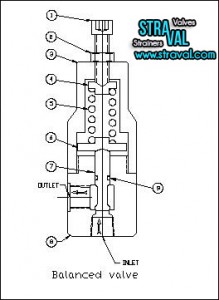
Sometimes an unbalanced model is selected because the porting arrangement may be more favorable (angle pattern vs in-line) than a balanced model and is sometimes also less costly. In addition the flow curve for one model may be more favorable for one type of valve compared to another. So that also needs to be weighed in the overall application criteria. However, generally overall performance of the valve should dictate the final valve selection in favor of the piping layout when the installation allows it.
Contact Straval for help with your specific application.
However, Straval cannot accept responsibility for the end use application and how its products are finally used in the customer’s piping system.
